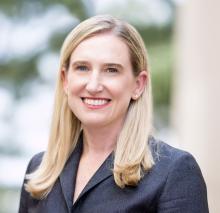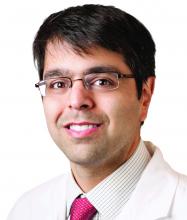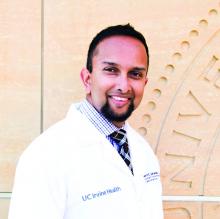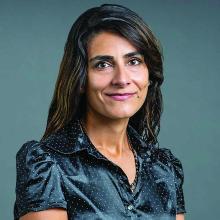User login
Unlock the Latest Clinical Updates with the 2024 PG Course OnDemand
Did you miss out on the AGA Postgraduate Course this year?
Visit agau.gastro.org to purchase today for flexible, on-the-go access to the latest clinical advances in the GI field.
- Unparalleled access: Choose when and where you dive into content with convenient access from any computer or mobile device.
- Incredible faculty: Learn from renowned experts who will offer their perspectives on cutting-edge research and clinical guidance.
- Tangible strategies: Expert and early career faculty will guide you through challenging patient cases and provide strategies you can easily implement upon your return to the office.
- Efficient learning: Content is organized by category: GI oncology, neurogastroenterology & motility, obesity, advanced endoscopy, and liver.
- Continuing education: With CME testing integrated directly into each session, you can easily earn up to 16 CME and MOC credits through December 31, 2024.
Did you miss out on the AGA Postgraduate Course this year?
Visit agau.gastro.org to purchase today for flexible, on-the-go access to the latest clinical advances in the GI field.
- Unparalleled access: Choose when and where you dive into content with convenient access from any computer or mobile device.
- Incredible faculty: Learn from renowned experts who will offer their perspectives on cutting-edge research and clinical guidance.
- Tangible strategies: Expert and early career faculty will guide you through challenging patient cases and provide strategies you can easily implement upon your return to the office.
- Efficient learning: Content is organized by category: GI oncology, neurogastroenterology & motility, obesity, advanced endoscopy, and liver.
- Continuing education: With CME testing integrated directly into each session, you can easily earn up to 16 CME and MOC credits through December 31, 2024.
Did you miss out on the AGA Postgraduate Course this year?
Visit agau.gastro.org to purchase today for flexible, on-the-go access to the latest clinical advances in the GI field.
- Unparalleled access: Choose when and where you dive into content with convenient access from any computer or mobile device.
- Incredible faculty: Learn from renowned experts who will offer their perspectives on cutting-edge research and clinical guidance.
- Tangible strategies: Expert and early career faculty will guide you through challenging patient cases and provide strategies you can easily implement upon your return to the office.
- Efficient learning: Content is organized by category: GI oncology, neurogastroenterology & motility, obesity, advanced endoscopy, and liver.
- Continuing education: With CME testing integrated directly into each session, you can easily earn up to 16 CME and MOC credits through December 31, 2024.
Five Steps to Improved Colonoscopy Performance
According to several experts who spoke at the American Gastroenterological Association’s Postgraduate Course this spring, which was offered at Digestive Disease Week (DDW), gastroenterologists can take these five steps to improve their performance: Addressing poor bowel prep, improving polyp detection, following the best intervals for polyp surveillance, reducing the environmental impact of gastrointestinal (GI) practice, and implementing artificial intelligence (AI) tools for efficiency and quality.
Addressing Poor Prep
To improve bowel preparation rates, clinicians may consider identifying those at high risk for inadequate prep, which could include known risk factors such as age, body mass index, inpatient status, constipation, tobacco use, and hypertension. However, other variables tend to serve as bigger predictors of inadequate prep, such as the patient’s status regarding cirrhosis, Parkinson’s disease, dementia, diabetes, opioid use, gastroparesis, tricyclics, and colorectal surgery.
Although several prediction models are based on some of these factors — looking at comorbidities, antidepressant use, constipation, and prior abdominal or pelvic surgery — the data don’t indicate whether knowing about or addressing these risks actually leads to better bowel prep, said Brian Jacobson, MD, associate professor of medicine at Harvard Medical School, Boston, and director of program development for gastroenterology at Massachusetts General Hospital in Boston.
Instead, the biggest return-on-investment option is to maximize prep for all patients, he said, especially since every patient has at least some risk of poor prep, either due to the required diet changes, medication considerations, or purgative solution and timing.
To create a state-of-the-art bowel prep process, Dr. Jacobson recommended numerous tactics for all patients: Verbal and written instructions for all components of prep, patient navigation with phone or virtual messaging to guide patients through the process, a low-fiber or all-liquid diet on the day before colonoscopy, and a split-dose 2-L prep regimen. Patients should begin the second half of the split-dose regimen 4-6 hours before colonoscopy and complete it at least 2 hours before the procedure starts, and clinicians should use an irrigation pump during colonoscopy to improve visibility.
Beyond that, Dr. Jacobson noted, higher risk patients can take a split-dose 4-L prep regimen with bisacodyl, a low-fiber diet 2-3 days before colonoscopy, and a clear liquid diet the day before colonoscopy. Using simethicone as an adjunct solution can also reduce bubbles in the colon.
Future tech developments may help clinicians as well, he said, such as using AI to identify patients at high risk and modifying their prep process, creating a personalized prep on a digital platform with videos that guide patients through the process, and using a phone checklist tool to indicate when they’re ready for colonoscopy.
Improving Polyp Detection
Adenoma detection rates (ADR) can be highly variable due to different techniques, technical skills, pattern recognition, interpretation, and experience. New adjunct and AI-based tools can help improve ADR, especially if clinicians want to improve, receive training, and use best-practice techniques.
“In colonoscopy, it’s tricky because it’s not just a blood test or an x-ray. There’s really a lot of technique involved, both cognitive awareness and pattern recognition, as well as our technical skills,” said Tonya Kaltenbach, MD, professor of clinical medicine at the University of California San Francisco and director of advanced endoscopy at the San Francisco VA Health Care System in San Francisco.
For instance, multiple tools and techniques may be needed in real time to interpret a lesion, such as washing, retroflexing, and using better lighting, while paying attention to alerts and noting areas for further inspection and resection.
“This is not innate. It’s a learned skill,” she said. “It’s something we need to intentionally make efforts on and get feedback to improve.”
Improvement starts with using the right mindset for lesion detection, Dr. Kaltenbach said, by having a “reflexive recognition of deconstructed patterns of normal” — following the lines, vessels, and folds and looking for interruptions, abnormal thickness, and mucus caps. On top of that, adjunctive tools such as caps/cuffs and dye chromoendoscopy can help with proper ergonomics, irrigation, and mucosa exposure.
In the past 3 years, real-world studies using AI and computer-assisted detection have shown mixed results, with some demonstrating significant increases in ADR, while others haven’t, she said. However, being willing to try AI and other tools, such as the Endocuff cap, may help improve ADR, standardize interpretation, improve efficiency, and increase reproducibility.
“We’re always better with intentional feedback and deliberate practice,” she said. “Remember that if you improve, you’re protecting the patient from death and reducing interval cancer.”
Following Polyp Surveillance Intervals
The US Multi-Society Task Force on Colorectal Cancer’s recommendations for follow-up after colonoscopy and polypectomy provide valuable information and rationale for how to determine surveillance intervals for patients. However, clinicians still may be unsure what to recommend for some patients — or tell them to come back too soon, leading to unnecessary colonoscopy.
For instance, a 47-year-old woman who presents for her initial screening and has a single 6-mm polyp, which pathology returns as a single adenoma may be considered to be at average risk and suggested to return in 7-10 years. The guidelines seem more obvious for patients with one or two adenomas under 10 mm removed en bloc.
However, once the case details shift into gray areas and include three or four adenomas between 10 and 20 mm, or piecemeal removal, clinicians may differ on their recommendations, said Rajesh N. Keswani, MD, associate professor of medicine at the Northwestern University Feinberg School of Medicine and director of endoscopy for Northwestern Medicine in Chicago. At DDW 2024, Dr. Keswani presented several case examples, often finding various audience opinions.
In addition, he noted, recent studies have found that clinicians may estimate imprecise polyp measurements, struggle to identify sessile serrated polyposis syndrome, and often don’t follow evidence-based guidelines.
“Why do we ignore the guidelines? There’s this perception that a patient has risk factors that aren’t addressed by the guidelines, with regards to family history or a distant history of a large polyp that we don’t want to leave to the usual intervals,” he said. “We feel uncomfortable, even with our meticulous colonoscopy, telling people to come back in 10 years.”
To improve guideline adherence, Dr. Keswani suggested providing additional education, implementing an automated surveillance calculator, and using guidelines at the point of care. At Northwestern, for instance, clinicians use a hyperlink with an interpreted version of the guidelines with prior colonoscopy considerations. Overall though, practitioners should feel comfortable leaning toward longer surveillance intervals, he noted.
“More effort should be spent on getting unscreened patients in for colonoscopy than bringing back low-risk patients too early,” he said.
Reducing Environmental Effects
In recent waste audits of endoscopy rooms, providers generate 1-3 kg of waste per procedure, which would fill 117 soccer fields to a depth of 1 m, based on 18 million procedures in the United States per year. This waste comes from procedure-related equipment, administration, medications, travel of patients and staff, and infrastructure with systems such as air conditioning. Taking steps toward a green practice can reduce waste and the carbon footprint of healthcare.
“When we think about improving colonoscopy performance, the goal is to prevent colon cancer death, but when we expand that, we have to apply sustainable practices as a domain of quality,” said Heiko Pohl, MD, professor of medicine at the Geisel School of Medicine at Dartmouth in Hanover, New Hampshire, and a gastroenterologist at White River Junction VA Medical Center in White River Junction, Vermont.
The GI Multisociety Strategic Plan on Environmental Sustainability suggests a 5-year initiative to improve sustainability and reduce waste across seven domains — clinical setting, education, research, society efforts, intersociety efforts, industry, and advocacy.
For instance, clinicians can take the biggest step toward sustainability by avoiding unneeded colonoscopies, Dr. Pohl said, noting that between 20% and 30% aren’t appropriate or indicated. Instead, practitioners can implement longer surveillance intervals, adhere to guidelines, and consider alternative tests, such as the fecal immunochemical test, fecal DNA, blood-based tests, and CT colonography, where relevant.
Clinicians can also rethink their approach to resection, such as using a snare first instead of forceps to reduce single-instrument use, using clip closure only when it’s truly indicated, and implementing AI-assisted optical diagnosis to help with leaving rectosigmoid polyps in place.
In terms of physical waste, practices may also reconsider how they sort bins and biohazards, looking at new ways to dispose of regulated medical waste, sharps, recyclables, and typical trash. Waste audits can help find ways to reduce paper, combine procedures, and create more efficient use of endoscopy rooms.
“We are really in a very precarious situation,” Dr. Pohl said. “It’s our generation that has a responsibility to change the course for our children’s and grandchildren’s sake.”
AI for Quality And Efficiency
Moving forward, AI tools will likely become more popular in various parts of GI practice, by assisting with documentation, spotting polyps, tracking mucosal surfaces, providing optical histopathology, and supervising performance through high-quality feedback.
“Endoscopy has reached the limits of human visual capacity, where seeing more pixels won’t necessarily improve clinical diagnosis. What’s next for elevating the care of patients really is AI,” said Jason B. Samarasena, MD, professor of medicine and program director of the interventional endoscopy training program at the University of California Irvine in Irvine, California.
As practices adopt AI-based systems, however, clinicians should be cautious about a false sense of comfort or “alarm fatigue” if bounding boxes become distracting. Instead, new tools need to be adopted as a “physician-AI hybrid,” with the endoscopist in mind, particularly if helpful for performing a better exam by watching withdrawal time or endoscope slippage.
“In real-world practice, this is being implemented without attention to endoscopist inclination and behavior,” he said. “Having a better understanding of physician attitudes could yield more optimal results.”
Notably, AI-assisted tools should be viewed akin to spell-check, which signals to the endoscopist when to pay attention and double-check an area — but primarily relies on the expert to do a high-quality exam, said Aasma Shaukat, MD, professor of medicine and director of GI outcomes research at the NYU Grossman School of Medicine, New York City.
“This should be an adjunct or an additional tool, not a replacement tool,” she added. “This doesn’t mean to stop doing astute observation.”
Future tools show promise in terms of tracking additional data related to prep quality, cecal landmarks, polyp size, mucosa exposure, histology prediction, and complete resection. These automated reports could also link to real-time dashboards, hospital or national registries, and reimbursement systems, Dr. Shaukat noted.
“At the end of the day, our interests are aligned,” she said. “Everybody cares about quality, patient satisfaction, and reimbursement, and with that goal in mind, I think some of the tools can be applied to show how we can achieve those principles together.”
Dr. Jacobson, Dr. Kaltenbach, Dr. Keswani, Dr. Pohl, Dr. Samarasena, and Dr. Shaukat reported no relevant financial relationships.
A version of this article appeared on Medscape.com.
According to several experts who spoke at the American Gastroenterological Association’s Postgraduate Course this spring, which was offered at Digestive Disease Week (DDW), gastroenterologists can take these five steps to improve their performance: Addressing poor bowel prep, improving polyp detection, following the best intervals for polyp surveillance, reducing the environmental impact of gastrointestinal (GI) practice, and implementing artificial intelligence (AI) tools for efficiency and quality.
Addressing Poor Prep
To improve bowel preparation rates, clinicians may consider identifying those at high risk for inadequate prep, which could include known risk factors such as age, body mass index, inpatient status, constipation, tobacco use, and hypertension. However, other variables tend to serve as bigger predictors of inadequate prep, such as the patient’s status regarding cirrhosis, Parkinson’s disease, dementia, diabetes, opioid use, gastroparesis, tricyclics, and colorectal surgery.
Although several prediction models are based on some of these factors — looking at comorbidities, antidepressant use, constipation, and prior abdominal or pelvic surgery — the data don’t indicate whether knowing about or addressing these risks actually leads to better bowel prep, said Brian Jacobson, MD, associate professor of medicine at Harvard Medical School, Boston, and director of program development for gastroenterology at Massachusetts General Hospital in Boston.
Instead, the biggest return-on-investment option is to maximize prep for all patients, he said, especially since every patient has at least some risk of poor prep, either due to the required diet changes, medication considerations, or purgative solution and timing.
To create a state-of-the-art bowel prep process, Dr. Jacobson recommended numerous tactics for all patients: Verbal and written instructions for all components of prep, patient navigation with phone or virtual messaging to guide patients through the process, a low-fiber or all-liquid diet on the day before colonoscopy, and a split-dose 2-L prep regimen. Patients should begin the second half of the split-dose regimen 4-6 hours before colonoscopy and complete it at least 2 hours before the procedure starts, and clinicians should use an irrigation pump during colonoscopy to improve visibility.
Beyond that, Dr. Jacobson noted, higher risk patients can take a split-dose 4-L prep regimen with bisacodyl, a low-fiber diet 2-3 days before colonoscopy, and a clear liquid diet the day before colonoscopy. Using simethicone as an adjunct solution can also reduce bubbles in the colon.
Future tech developments may help clinicians as well, he said, such as using AI to identify patients at high risk and modifying their prep process, creating a personalized prep on a digital platform with videos that guide patients through the process, and using a phone checklist tool to indicate when they’re ready for colonoscopy.
Improving Polyp Detection
Adenoma detection rates (ADR) can be highly variable due to different techniques, technical skills, pattern recognition, interpretation, and experience. New adjunct and AI-based tools can help improve ADR, especially if clinicians want to improve, receive training, and use best-practice techniques.
“In colonoscopy, it’s tricky because it’s not just a blood test or an x-ray. There’s really a lot of technique involved, both cognitive awareness and pattern recognition, as well as our technical skills,” said Tonya Kaltenbach, MD, professor of clinical medicine at the University of California San Francisco and director of advanced endoscopy at the San Francisco VA Health Care System in San Francisco.
For instance, multiple tools and techniques may be needed in real time to interpret a lesion, such as washing, retroflexing, and using better lighting, while paying attention to alerts and noting areas for further inspection and resection.
“This is not innate. It’s a learned skill,” she said. “It’s something we need to intentionally make efforts on and get feedback to improve.”
Improvement starts with using the right mindset for lesion detection, Dr. Kaltenbach said, by having a “reflexive recognition of deconstructed patterns of normal” — following the lines, vessels, and folds and looking for interruptions, abnormal thickness, and mucus caps. On top of that, adjunctive tools such as caps/cuffs and dye chromoendoscopy can help with proper ergonomics, irrigation, and mucosa exposure.
In the past 3 years, real-world studies using AI and computer-assisted detection have shown mixed results, with some demonstrating significant increases in ADR, while others haven’t, she said. However, being willing to try AI and other tools, such as the Endocuff cap, may help improve ADR, standardize interpretation, improve efficiency, and increase reproducibility.
“We’re always better with intentional feedback and deliberate practice,” she said. “Remember that if you improve, you’re protecting the patient from death and reducing interval cancer.”
Following Polyp Surveillance Intervals
The US Multi-Society Task Force on Colorectal Cancer’s recommendations for follow-up after colonoscopy and polypectomy provide valuable information and rationale for how to determine surveillance intervals for patients. However, clinicians still may be unsure what to recommend for some patients — or tell them to come back too soon, leading to unnecessary colonoscopy.
For instance, a 47-year-old woman who presents for her initial screening and has a single 6-mm polyp, which pathology returns as a single adenoma may be considered to be at average risk and suggested to return in 7-10 years. The guidelines seem more obvious for patients with one or two adenomas under 10 mm removed en bloc.
However, once the case details shift into gray areas and include three or four adenomas between 10 and 20 mm, or piecemeal removal, clinicians may differ on their recommendations, said Rajesh N. Keswani, MD, associate professor of medicine at the Northwestern University Feinberg School of Medicine and director of endoscopy for Northwestern Medicine in Chicago. At DDW 2024, Dr. Keswani presented several case examples, often finding various audience opinions.
In addition, he noted, recent studies have found that clinicians may estimate imprecise polyp measurements, struggle to identify sessile serrated polyposis syndrome, and often don’t follow evidence-based guidelines.
“Why do we ignore the guidelines? There’s this perception that a patient has risk factors that aren’t addressed by the guidelines, with regards to family history or a distant history of a large polyp that we don’t want to leave to the usual intervals,” he said. “We feel uncomfortable, even with our meticulous colonoscopy, telling people to come back in 10 years.”
To improve guideline adherence, Dr. Keswani suggested providing additional education, implementing an automated surveillance calculator, and using guidelines at the point of care. At Northwestern, for instance, clinicians use a hyperlink with an interpreted version of the guidelines with prior colonoscopy considerations. Overall though, practitioners should feel comfortable leaning toward longer surveillance intervals, he noted.
“More effort should be spent on getting unscreened patients in for colonoscopy than bringing back low-risk patients too early,” he said.
Reducing Environmental Effects
In recent waste audits of endoscopy rooms, providers generate 1-3 kg of waste per procedure, which would fill 117 soccer fields to a depth of 1 m, based on 18 million procedures in the United States per year. This waste comes from procedure-related equipment, administration, medications, travel of patients and staff, and infrastructure with systems such as air conditioning. Taking steps toward a green practice can reduce waste and the carbon footprint of healthcare.
“When we think about improving colonoscopy performance, the goal is to prevent colon cancer death, but when we expand that, we have to apply sustainable practices as a domain of quality,” said Heiko Pohl, MD, professor of medicine at the Geisel School of Medicine at Dartmouth in Hanover, New Hampshire, and a gastroenterologist at White River Junction VA Medical Center in White River Junction, Vermont.
The GI Multisociety Strategic Plan on Environmental Sustainability suggests a 5-year initiative to improve sustainability and reduce waste across seven domains — clinical setting, education, research, society efforts, intersociety efforts, industry, and advocacy.
For instance, clinicians can take the biggest step toward sustainability by avoiding unneeded colonoscopies, Dr. Pohl said, noting that between 20% and 30% aren’t appropriate or indicated. Instead, practitioners can implement longer surveillance intervals, adhere to guidelines, and consider alternative tests, such as the fecal immunochemical test, fecal DNA, blood-based tests, and CT colonography, where relevant.
Clinicians can also rethink their approach to resection, such as using a snare first instead of forceps to reduce single-instrument use, using clip closure only when it’s truly indicated, and implementing AI-assisted optical diagnosis to help with leaving rectosigmoid polyps in place.
In terms of physical waste, practices may also reconsider how they sort bins and biohazards, looking at new ways to dispose of regulated medical waste, sharps, recyclables, and typical trash. Waste audits can help find ways to reduce paper, combine procedures, and create more efficient use of endoscopy rooms.
“We are really in a very precarious situation,” Dr. Pohl said. “It’s our generation that has a responsibility to change the course for our children’s and grandchildren’s sake.”
AI for Quality And Efficiency
Moving forward, AI tools will likely become more popular in various parts of GI practice, by assisting with documentation, spotting polyps, tracking mucosal surfaces, providing optical histopathology, and supervising performance through high-quality feedback.
“Endoscopy has reached the limits of human visual capacity, where seeing more pixels won’t necessarily improve clinical diagnosis. What’s next for elevating the care of patients really is AI,” said Jason B. Samarasena, MD, professor of medicine and program director of the interventional endoscopy training program at the University of California Irvine in Irvine, California.
As practices adopt AI-based systems, however, clinicians should be cautious about a false sense of comfort or “alarm fatigue” if bounding boxes become distracting. Instead, new tools need to be adopted as a “physician-AI hybrid,” with the endoscopist in mind, particularly if helpful for performing a better exam by watching withdrawal time or endoscope slippage.
“In real-world practice, this is being implemented without attention to endoscopist inclination and behavior,” he said. “Having a better understanding of physician attitudes could yield more optimal results.”
Notably, AI-assisted tools should be viewed akin to spell-check, which signals to the endoscopist when to pay attention and double-check an area — but primarily relies on the expert to do a high-quality exam, said Aasma Shaukat, MD, professor of medicine and director of GI outcomes research at the NYU Grossman School of Medicine, New York City.
“This should be an adjunct or an additional tool, not a replacement tool,” she added. “This doesn’t mean to stop doing astute observation.”
Future tools show promise in terms of tracking additional data related to prep quality, cecal landmarks, polyp size, mucosa exposure, histology prediction, and complete resection. These automated reports could also link to real-time dashboards, hospital or national registries, and reimbursement systems, Dr. Shaukat noted.
“At the end of the day, our interests are aligned,” she said. “Everybody cares about quality, patient satisfaction, and reimbursement, and with that goal in mind, I think some of the tools can be applied to show how we can achieve those principles together.”
Dr. Jacobson, Dr. Kaltenbach, Dr. Keswani, Dr. Pohl, Dr. Samarasena, and Dr. Shaukat reported no relevant financial relationships.
A version of this article appeared on Medscape.com.
According to several experts who spoke at the American Gastroenterological Association’s Postgraduate Course this spring, which was offered at Digestive Disease Week (DDW), gastroenterologists can take these five steps to improve their performance: Addressing poor bowel prep, improving polyp detection, following the best intervals for polyp surveillance, reducing the environmental impact of gastrointestinal (GI) practice, and implementing artificial intelligence (AI) tools for efficiency and quality.
Addressing Poor Prep
To improve bowel preparation rates, clinicians may consider identifying those at high risk for inadequate prep, which could include known risk factors such as age, body mass index, inpatient status, constipation, tobacco use, and hypertension. However, other variables tend to serve as bigger predictors of inadequate prep, such as the patient’s status regarding cirrhosis, Parkinson’s disease, dementia, diabetes, opioid use, gastroparesis, tricyclics, and colorectal surgery.
Although several prediction models are based on some of these factors — looking at comorbidities, antidepressant use, constipation, and prior abdominal or pelvic surgery — the data don’t indicate whether knowing about or addressing these risks actually leads to better bowel prep, said Brian Jacobson, MD, associate professor of medicine at Harvard Medical School, Boston, and director of program development for gastroenterology at Massachusetts General Hospital in Boston.
Instead, the biggest return-on-investment option is to maximize prep for all patients, he said, especially since every patient has at least some risk of poor prep, either due to the required diet changes, medication considerations, or purgative solution and timing.
To create a state-of-the-art bowel prep process, Dr. Jacobson recommended numerous tactics for all patients: Verbal and written instructions for all components of prep, patient navigation with phone or virtual messaging to guide patients through the process, a low-fiber or all-liquid diet on the day before colonoscopy, and a split-dose 2-L prep regimen. Patients should begin the second half of the split-dose regimen 4-6 hours before colonoscopy and complete it at least 2 hours before the procedure starts, and clinicians should use an irrigation pump during colonoscopy to improve visibility.
Beyond that, Dr. Jacobson noted, higher risk patients can take a split-dose 4-L prep regimen with bisacodyl, a low-fiber diet 2-3 days before colonoscopy, and a clear liquid diet the day before colonoscopy. Using simethicone as an adjunct solution can also reduce bubbles in the colon.
Future tech developments may help clinicians as well, he said, such as using AI to identify patients at high risk and modifying their prep process, creating a personalized prep on a digital platform with videos that guide patients through the process, and using a phone checklist tool to indicate when they’re ready for colonoscopy.
Improving Polyp Detection
Adenoma detection rates (ADR) can be highly variable due to different techniques, technical skills, pattern recognition, interpretation, and experience. New adjunct and AI-based tools can help improve ADR, especially if clinicians want to improve, receive training, and use best-practice techniques.
“In colonoscopy, it’s tricky because it’s not just a blood test or an x-ray. There’s really a lot of technique involved, both cognitive awareness and pattern recognition, as well as our technical skills,” said Tonya Kaltenbach, MD, professor of clinical medicine at the University of California San Francisco and director of advanced endoscopy at the San Francisco VA Health Care System in San Francisco.
For instance, multiple tools and techniques may be needed in real time to interpret a lesion, such as washing, retroflexing, and using better lighting, while paying attention to alerts and noting areas for further inspection and resection.
“This is not innate. It’s a learned skill,” she said. “It’s something we need to intentionally make efforts on and get feedback to improve.”
Improvement starts with using the right mindset for lesion detection, Dr. Kaltenbach said, by having a “reflexive recognition of deconstructed patterns of normal” — following the lines, vessels, and folds and looking for interruptions, abnormal thickness, and mucus caps. On top of that, adjunctive tools such as caps/cuffs and dye chromoendoscopy can help with proper ergonomics, irrigation, and mucosa exposure.
In the past 3 years, real-world studies using AI and computer-assisted detection have shown mixed results, with some demonstrating significant increases in ADR, while others haven’t, she said. However, being willing to try AI and other tools, such as the Endocuff cap, may help improve ADR, standardize interpretation, improve efficiency, and increase reproducibility.
“We’re always better with intentional feedback and deliberate practice,” she said. “Remember that if you improve, you’re protecting the patient from death and reducing interval cancer.”
Following Polyp Surveillance Intervals
The US Multi-Society Task Force on Colorectal Cancer’s recommendations for follow-up after colonoscopy and polypectomy provide valuable information and rationale for how to determine surveillance intervals for patients. However, clinicians still may be unsure what to recommend for some patients — or tell them to come back too soon, leading to unnecessary colonoscopy.
For instance, a 47-year-old woman who presents for her initial screening and has a single 6-mm polyp, which pathology returns as a single adenoma may be considered to be at average risk and suggested to return in 7-10 years. The guidelines seem more obvious for patients with one or two adenomas under 10 mm removed en bloc.
However, once the case details shift into gray areas and include three or four adenomas between 10 and 20 mm, or piecemeal removal, clinicians may differ on their recommendations, said Rajesh N. Keswani, MD, associate professor of medicine at the Northwestern University Feinberg School of Medicine and director of endoscopy for Northwestern Medicine in Chicago. At DDW 2024, Dr. Keswani presented several case examples, often finding various audience opinions.
In addition, he noted, recent studies have found that clinicians may estimate imprecise polyp measurements, struggle to identify sessile serrated polyposis syndrome, and often don’t follow evidence-based guidelines.
“Why do we ignore the guidelines? There’s this perception that a patient has risk factors that aren’t addressed by the guidelines, with regards to family history or a distant history of a large polyp that we don’t want to leave to the usual intervals,” he said. “We feel uncomfortable, even with our meticulous colonoscopy, telling people to come back in 10 years.”
To improve guideline adherence, Dr. Keswani suggested providing additional education, implementing an automated surveillance calculator, and using guidelines at the point of care. At Northwestern, for instance, clinicians use a hyperlink with an interpreted version of the guidelines with prior colonoscopy considerations. Overall though, practitioners should feel comfortable leaning toward longer surveillance intervals, he noted.
“More effort should be spent on getting unscreened patients in for colonoscopy than bringing back low-risk patients too early,” he said.
Reducing Environmental Effects
In recent waste audits of endoscopy rooms, providers generate 1-3 kg of waste per procedure, which would fill 117 soccer fields to a depth of 1 m, based on 18 million procedures in the United States per year. This waste comes from procedure-related equipment, administration, medications, travel of patients and staff, and infrastructure with systems such as air conditioning. Taking steps toward a green practice can reduce waste and the carbon footprint of healthcare.
“When we think about improving colonoscopy performance, the goal is to prevent colon cancer death, but when we expand that, we have to apply sustainable practices as a domain of quality,” said Heiko Pohl, MD, professor of medicine at the Geisel School of Medicine at Dartmouth in Hanover, New Hampshire, and a gastroenterologist at White River Junction VA Medical Center in White River Junction, Vermont.
The GI Multisociety Strategic Plan on Environmental Sustainability suggests a 5-year initiative to improve sustainability and reduce waste across seven domains — clinical setting, education, research, society efforts, intersociety efforts, industry, and advocacy.
For instance, clinicians can take the biggest step toward sustainability by avoiding unneeded colonoscopies, Dr. Pohl said, noting that between 20% and 30% aren’t appropriate or indicated. Instead, practitioners can implement longer surveillance intervals, adhere to guidelines, and consider alternative tests, such as the fecal immunochemical test, fecal DNA, blood-based tests, and CT colonography, where relevant.
Clinicians can also rethink their approach to resection, such as using a snare first instead of forceps to reduce single-instrument use, using clip closure only when it’s truly indicated, and implementing AI-assisted optical diagnosis to help with leaving rectosigmoid polyps in place.
In terms of physical waste, practices may also reconsider how they sort bins and biohazards, looking at new ways to dispose of regulated medical waste, sharps, recyclables, and typical trash. Waste audits can help find ways to reduce paper, combine procedures, and create more efficient use of endoscopy rooms.
“We are really in a very precarious situation,” Dr. Pohl said. “It’s our generation that has a responsibility to change the course for our children’s and grandchildren’s sake.”
AI for Quality And Efficiency
Moving forward, AI tools will likely become more popular in various parts of GI practice, by assisting with documentation, spotting polyps, tracking mucosal surfaces, providing optical histopathology, and supervising performance through high-quality feedback.
“Endoscopy has reached the limits of human visual capacity, where seeing more pixels won’t necessarily improve clinical diagnosis. What’s next for elevating the care of patients really is AI,” said Jason B. Samarasena, MD, professor of medicine and program director of the interventional endoscopy training program at the University of California Irvine in Irvine, California.
As practices adopt AI-based systems, however, clinicians should be cautious about a false sense of comfort or “alarm fatigue” if bounding boxes become distracting. Instead, new tools need to be adopted as a “physician-AI hybrid,” with the endoscopist in mind, particularly if helpful for performing a better exam by watching withdrawal time or endoscope slippage.
“In real-world practice, this is being implemented without attention to endoscopist inclination and behavior,” he said. “Having a better understanding of physician attitudes could yield more optimal results.”
Notably, AI-assisted tools should be viewed akin to spell-check, which signals to the endoscopist when to pay attention and double-check an area — but primarily relies on the expert to do a high-quality exam, said Aasma Shaukat, MD, professor of medicine and director of GI outcomes research at the NYU Grossman School of Medicine, New York City.
“This should be an adjunct or an additional tool, not a replacement tool,” she added. “This doesn’t mean to stop doing astute observation.”
Future tools show promise in terms of tracking additional data related to prep quality, cecal landmarks, polyp size, mucosa exposure, histology prediction, and complete resection. These automated reports could also link to real-time dashboards, hospital or national registries, and reimbursement systems, Dr. Shaukat noted.
“At the end of the day, our interests are aligned,” she said. “Everybody cares about quality, patient satisfaction, and reimbursement, and with that goal in mind, I think some of the tools can be applied to show how we can achieve those principles together.”
Dr. Jacobson, Dr. Kaltenbach, Dr. Keswani, Dr. Pohl, Dr. Samarasena, and Dr. Shaukat reported no relevant financial relationships.
A version of this article appeared on Medscape.com.






